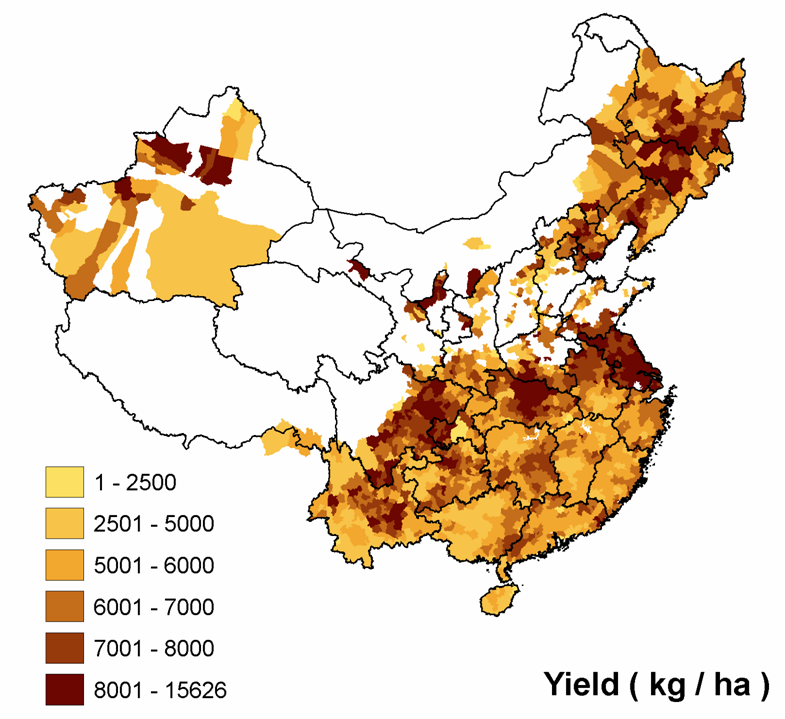The 8th African Crop Science Society meeting will take place in Egypt from 27 to 31 October. Could be some interesting papers, if anyone survives scrutiny of the conference web page). We keep saying this, and we keep meaning it: if any reader is at the meeting and wants to send a report, we’ll be happy to receive it.
BGCI Video Project
Botanic Gardens Conservation International wants YOU to make a film! I hope some of them at least will be about the agricultural biodiversity that botanic gardens conserve and study — crop wild relatives, for example. But hey, don’t forget we have a video competition here too!
Rice, China and climate change

Remember Jeremy has an omnibus post about Chinese agrobiodiversity.
Indian fruit genebank threatened by democracy
NB: Update here.
We interrupt this blog for a public service announcement. The Indian Express is reporting a proposal by the government of Jharkand State in northeast India to bulldoze the field genebanks of the Horticulture and Agro Forestry Research Programme. More than 20 years of work and thousands of fruit varieties are set to be destroyed in order to create bungalows for Members of Parliament.
What to do? This makes the UK’s attempts to dump its apple and pear collection look positively suave. We’ve alerted people who might have some influence. But seriously, what else can be done? Is anyone in Jharkand taking this up? How about the rest of India? We’re rank amateurs at activism. Advise us.
We wouldn’t normally repost an entire item, but this is important enough that we’re making an exception. So here goes.
Continue reading “Indian fruit genebank threatened by democracy”
Can wild relatives survive introgression?
Crops can benefit from the introgression of genes from their wild relatives, but what about the other way around? Is the survival of crop wild relatives jeopardized by the “genetic pollution” caused by hybridization with the cultigen? A paper just out in the Journal of Applied Biology takes an experimental and modeling approach to answering this question 2.
The researchers monitored the germination, survival and seed-set of hybrids between wild (Lactuca serriola) and cultivated lettuce (L. sativa). The overall fitness of hybrids was higher than that of the “unpolluted” wild relative in the first couple of generations, but as those hybrids were selfed and backcrossed, their fitness decreased. These data were then entered into a model, to see what would happen over time to a L. serriola population exposed to geneflow from the cultigen. What happens is that the wild relative can indeed be completely displaced by hybrids, but that is not a foregone conclusion, and in any case displacement, if it takes place, will not be as rapid as predicted by previous models which did not take into account the breakdown in heterosis.
So genetic pollution does pose a real threat to crop wild relatives in the field 3, but perhaps not as great as some have suggested. And in any case we now seem to have a model that can be used to assess the risk of genetic pollution, including by transgenes.